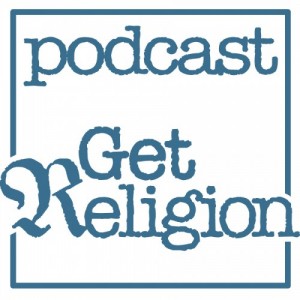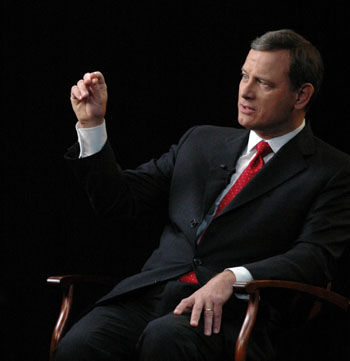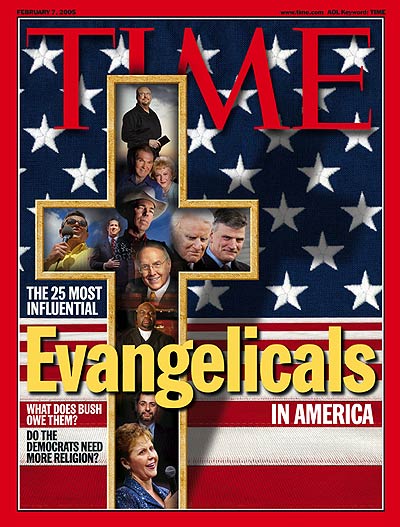On this week’s “Crossroads” podcast, host Todd Wilken and I discussed Dave Brubeck’s sacred music and religious life — and how substantive discussion of same were missing from many obituaries about the jazz great. We also discussed the general cheerleading of coverage dealing with same-sex marriage.
The hook for that was the stories leading up to the Supreme Court’s decision about whether to hear the rulings related to California’s Proposition 8 decision. On Friday, as tmatt noted, the court announced it would take up that case, as well as the one related to federal benefits for same-sex couples.
In a post about this tenor of coverage from last week, I wrote
I can’t help but think that the same media that has written for approaching a full decade on one U.S. Senator’s thoughts on a gay-related court case might have a tad more interest in the particulars of an important court ruling with implications for religious exercise, gender roles and kinship. But maybe that’s just me.
There’s still time for the court to say it’s going to take up one of the cases. Let us know if you see any coverage that deviates from the expected narrative.
Reader The Old Bill responded:
Yes, Mollie, it’s you. You think a reporter should report on what is happening, not what he feels should be happening. The press treats a complete change in what marriage has always been as something that has but one side. Anyone who might question this is, as the judge said, irrational and “on the wrong side of history.”
What is reported depends a lot on what is assumed.
I saw no deviation from that standard narrative this weekend in the early reports on the SCOTUS decision. The terminology of one side of the debate has been more or less adopted by the mainstream media. It’s not uncommon to see the phrase “marriage equality” used — outside of quotes, much less scare quotes — in mainstream reports. While those opposed to changes in marriage law say that “same-sex marriage” is an ontological impossibility — akin to saying “square circles” and calling for “shape equality” — the media usually fail to mention this perspective or put it at the end of a story in quotes from the token opposition.
There just hasn’t been any coverage of the substance of arguments against changing marriage law, much less a discussion of the consequences of same, outside of some one-sided enthusiasm. I’m not telling you anything you don’t know if you follow this, no matter your personal views on marriage law. So in the New York Times article announcing the SCOTUS decision, we learn in the fourth paragraph:
The court’s move comes against the backdrop of a rapid shift in public attitudes about same-sex marriage, with recent polls indicating that a majority of Americans support allowing such unions. After the elections last month, the number of states authorizing same-sex marriage increased by half, to nine.
This paragraph comes right after a paragraph saying that the court is to decide whether one of the cases is constitutional, an interesting juxtaposition of popularity and principle. In the 15th paragraph, we get this brief, anodyne quote from someone opposed to changing marriage law:
Brian S. Brown, the president of the National Organization for Marriage, said the court should address the broader question but say no. “What’s at stake,” he said, “is whether the Constitution demands a redefinition of marriage and whether states can even vote on this issue.”
Just interesting.
Also interesting was that the only other next-day story from the New York Times was reported by five reporters and was outspokenly only about one side of the debate. The headline is “Worry Tempers Joy Over Gay Marriage’s Moment in Court.”
The entire article is just quote after quote after quote after quote of people who, like those in the New York Times newsroom, all think the same thing about what the definition of marriage should be. And that’s fine, I guess, but isn’t it weird to not have an article about those people on the other side of the debate?
Do they have worry and joy, too? Do their views matter at all? Why can’t we talk about them in news articles? Why the complete lock-down on just talking to them and hearing from them and learning what they think about this step?
If you have five reporters covering that story, maybe you could peel one or two off to talk to a real-live supporter of traditional marriage laws. Or is it, as the Times public editor put it in her column criticizing the paper for failing to cover the Bradley Manning hearings, “Such decisions seem to say: ‘It’s news when we say it’s news.'”
That’s a lot of power for a paper to hold, but it should be used wisely. There’s nothing to fear from simply hearing from multiple sides of a given issue. Perhaps there’s even much to gain from such a journalistic approach.














